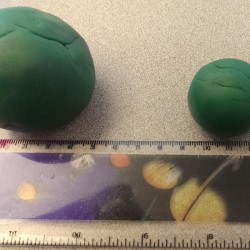 View larger
View larger
Playdough Planets
New activity
Patrons create rocky planets out of play dough, and then learn about distances in our Solar System by placing them the correct distance apart.
Open Activity
How-to Video
-
Rating
-
Participants Enjoyed the ActivityParticipants Learned from This ActivityActivity Instructions Were Clear and Easy to FollowWould Recommend
Related Programming Resources
Reviews
Interesting project
I tried this project out in an educator's training session. It was interesting to physically see the differences in sizes between the moon, Earth, and Mars, as well as figure out and see the distance between them. I also liked how it involved weighing and measuring the materials, as it enforces math skills.
In terms of working with the project with kids, it is definitely best for an older crowd, 5th grade and up, because of the weighing and measuring involved. I'd also pair it with something more active (like the Crater Creations project). Combined, the two would make for a fun and engaging program.



